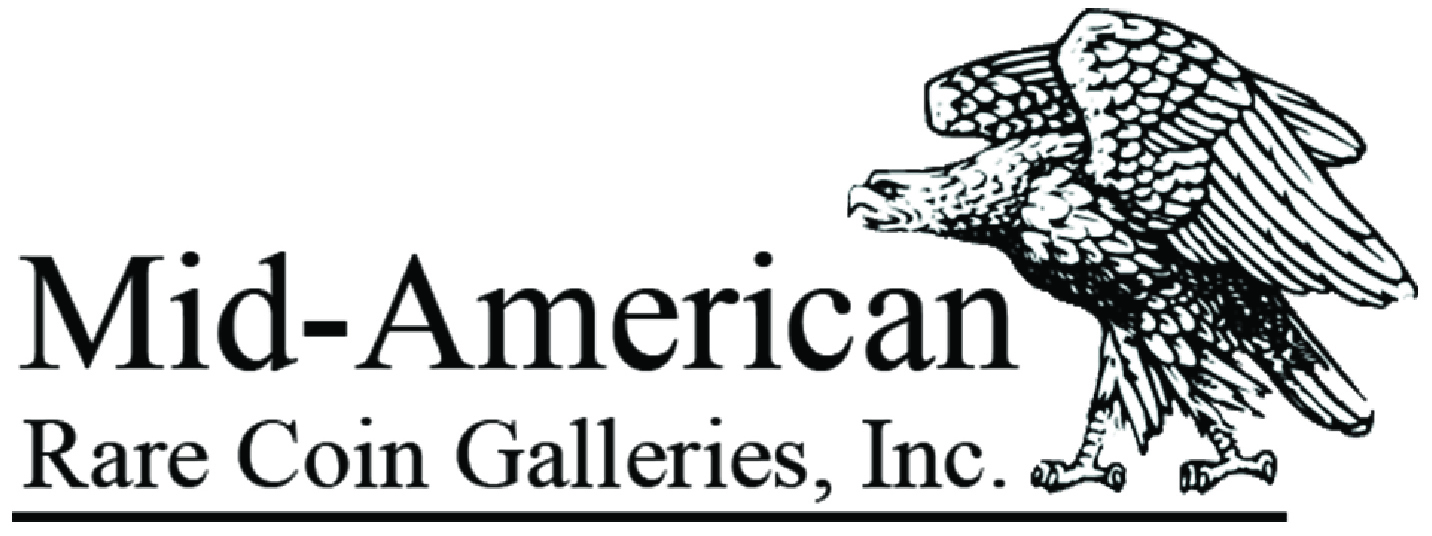As gold prices surged to record levels in the last month or so, the value of “generic” United States gold coins has fallen to historic lows in relation to spot gold prices. Gold recently topped $2,400 per ounce for a few days. Generic gold coins are defined as common-date U.S. gold coins that can be found in quantity. Most commonly seen are double eagles from the late 1880s to 1928.
The category also includes other denominations: gold dollars, quarter eagles, half eagles, and eagles. The lower denominations are more difficult to find in quantity, but common dates of the series trade as generic issues. The term “generic” generally refers to the most common dates of the type.
The reason these U.S. gold coins can be found in quantity has its foundation in the monetary history of the country. Over a century ago, the U.S. began shipping large quantities of gold coins to Europe and other countries as part of international trade. One only needs to check the mintages of U.S. gold coins from this era to understand the number of coins that circulated here and abroad. We are talking about millions of coins.
In 1933, the United States famously went off the gold standard and made private ownership of most gold illegal. This included all gold coins except collectible pieces. Luckily, Treasury Secretary William Woodin was a coin collector and understood the importance of this exemption.
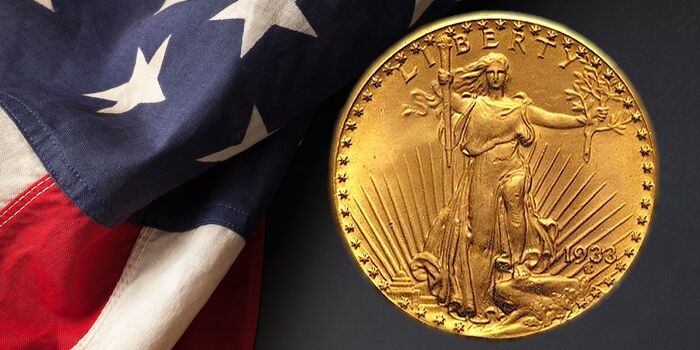
Regardless, vast quantities of U.S. gold coins were surrendered and melted (along with more than 450,000 1933 Double Eagles that were never officially circulated). It took several years to melt everything, and this is the gold that is now stored at Fort Knox. Many rare coins were turned in as well and were rescued at banks around the country.
Vast quantities of U.S. gold coins that had been sent overseas did not meet the same fate. Banks and other institutions around the world kept these coins secured as a store of wealth. It should be remembered that citizens of many European countries view gold favorably for its hard asset appeal. Some have memories of sharply depreciating currencies or worse: the overthrow and invasion of the country itself. Unlike in our country, many banks in Europe sell vintage gold coins from around the world, including U.S. double eagles.
Starting in the 1950s, U.S. coin dealers started making trips to Europe to buy gold coins to sell back home. Many rare dates of double eagles were discovered over the years, and many issues were radically adjusted in terms of rarity.
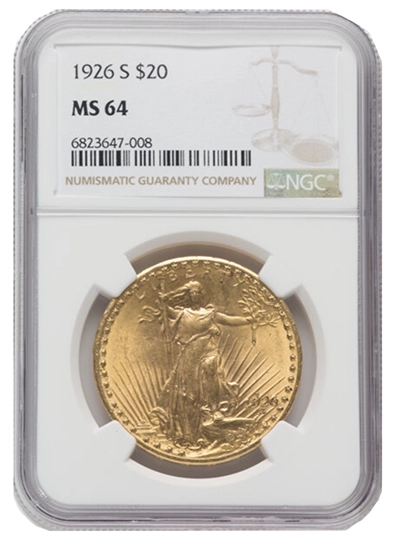
The 1926-S is a classic example. At one time it was considered a major rarity, and the 1948 issue of the Red Book lists these coins for $900 (the 1927-D was listed at $550). By 1966, the coin had fallen to only $375. Over the next several decades, U.S. gold coins were repatriated back home at a regular pace. The pace was steady, but not overwhelming enough to disrupt prices radically.
The supply and demand ratio has recently been heavily tilted toward supply. As gold prices surged, many buyers have stayed on the sidelines for the time being. There are simply more sellers than buyers for most generic gold coins.
Although the details are unknown, one of the largest hoards of U.S. gold coins ever to surface has been entering the market at a steady clip. The Stack’s Bowers auction sales of the Fairmont Collection are the cream of the hoard. A staggering number of coins have been sold so far, and there will probably be more in the near future.
The generic gold premium for common-date double eagles has fluctuated over the years, with the occasional spike for one reason or another. The Y2K scare of 1999 created a rush to hard assets and double eagle prices soared in relation to spot gold prices. The market for generic gold coins is depressed for now and will stay that way until demand strengthens and the supply subsides.
Below is a list of historical wholesale prices for some of the most commonly seen NGC-graded U.S. gold coins:
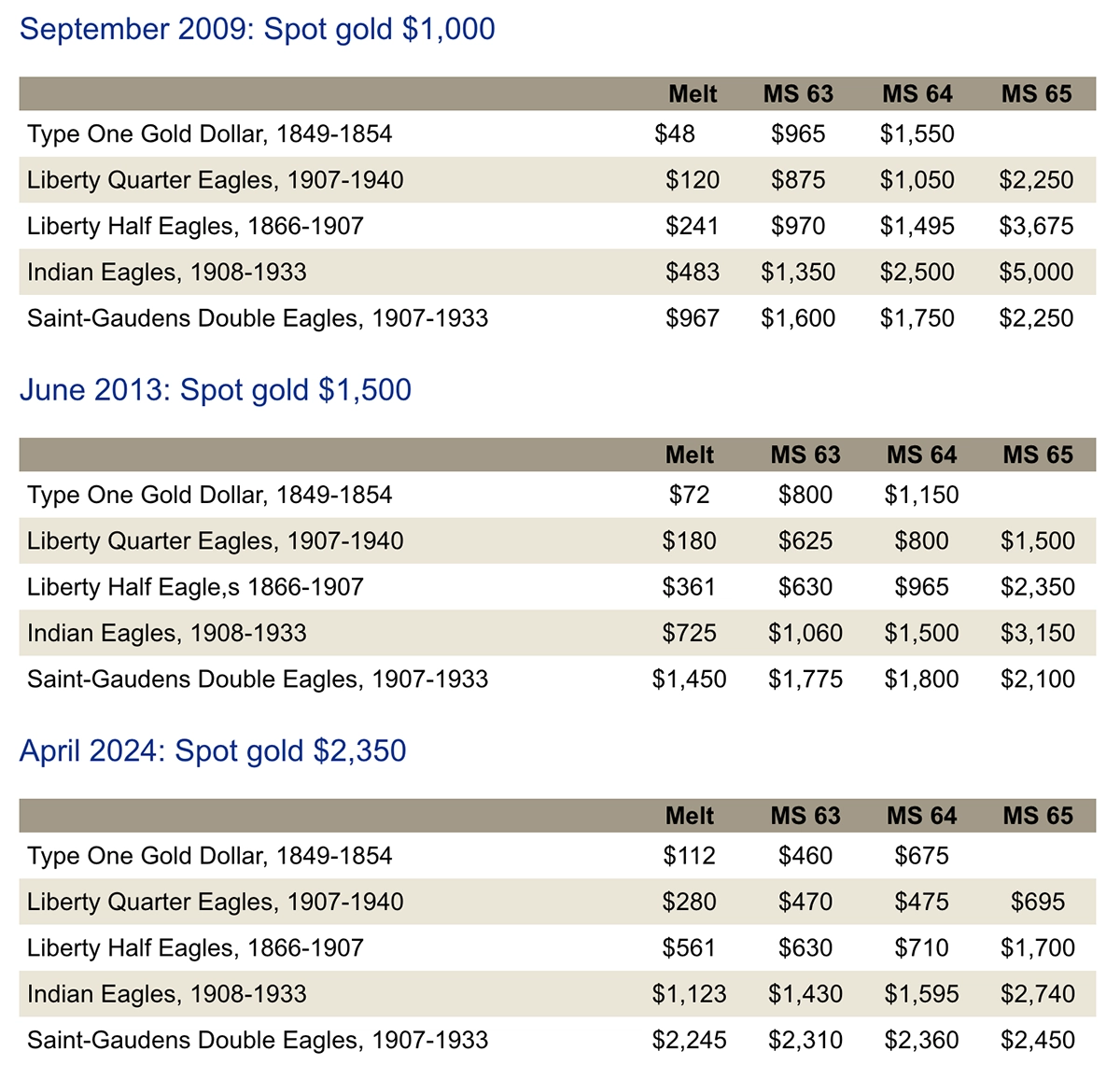
As can be seen from the above, the most recent premium for U.S. gold coins is at historic lows. For the last couple of years, the supply of U.S. gold coins coming from Europe has far exceeded the demand. Many have speculated on the reason for this occurring. Perhaps the European banks no longer view gold as the safety net of generations past. Regardless of the reason, current prices represent an important opportunity for anyone who loves vintage U.S. gold coins.
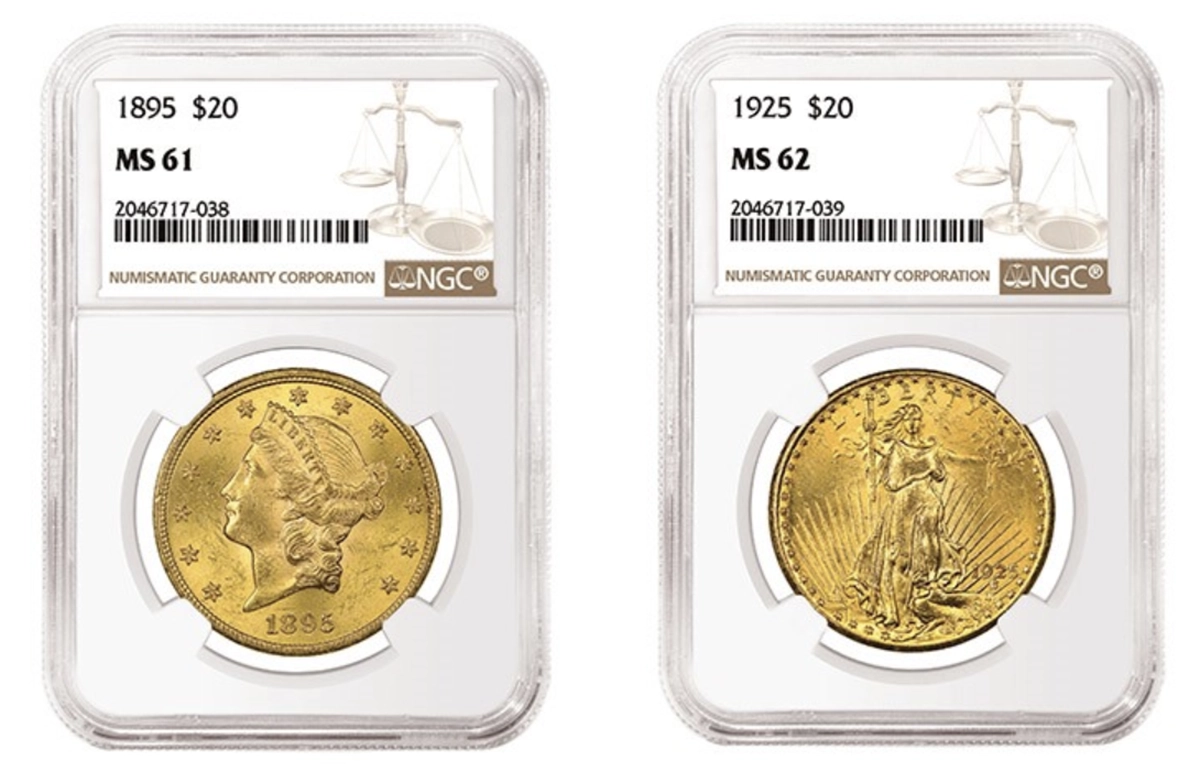
Double eagles represent the large majority of gold coins that have flowed back to the States in recent years. The price drops on these pieces have put enormous downward pressure on the prices of other common-date U.S. gold coins. I can assure you that very few gold dollars and quarter eagles are in European gold shipments. Unfortunately, these have seen their prices slashed in recent years as well. It’s sort of like “throwing out the baby with the bath water.”
You will note that in 2009, MS65 Saint-Gaudens Double Eagles sold for $2,250 when gold was at $1,000 per ounce spot. Gold prices are now about $2,350 and MS65 Saints only bring about $2,450, just a tiny premium over their melt value.
This is the lowest premium in the history of the coin business!
In my opinion, these coins are raging bargains at these prices. There has never been a better time to find some attractive examples for your collection or as an investment. One idea that I would suggest is to buy as many different dates of these issues at or near the current generic gold premiums. This would be a great start for a serious collection of any of these issues.
Remember, the prices listed above are wholesale indications and your cost will vary depending on source and quality. As usual, my advice is to buy the best you can afford.
